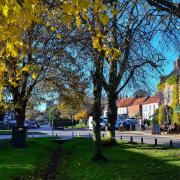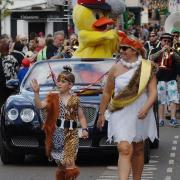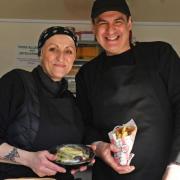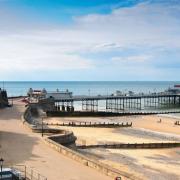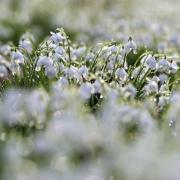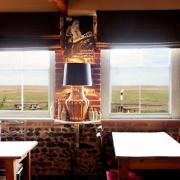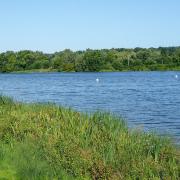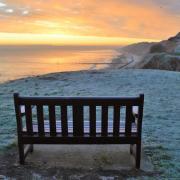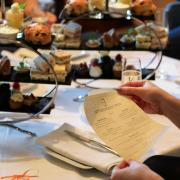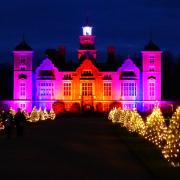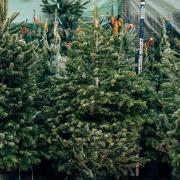Vanished fairytale turrets, a secret chapel and a holy well; flamboyant bricks, twin rivers, toads helped on their way and a name few can spell. Could it be magic just west of Norwich?

1. Spells
It's one of the place names designed to sort the locals from the incomers - although the spellcheck-beating, pronunciation-testing accumulation of extra letters probably did not happen until Victorian times. It was plain Cossey in the 17th century.

2. Wells
Pilgrims once travelled to Costessey to visit a holy well. After St Walstan died, just over 1,000 years ago, his body was pulled on a cart to Bawburgh. Springs were said to have arisen in the fields where he died in Taverham, the site of his burial in Bawburgh and where the funeral procession halted in Costessey.

3. A secret chapel
Costessey was once a centre of secret Roman Catholic church services. After the Reformation people had to attend Protestant church services, but the Jerninghams of Costessey Hall continued Roman Catholic services in a secret chapel, hidden in the attics. By the late 18th century more freedom of worship was allowed and the family commissioned a chapel in the grounds of Costessey Hall. By 1830 people were travelling up to 20 miles to attend services and a new church was commissioned for the village of Costessey - the thriving Church of Our Lady and St Walstan. Costessey still has a significant Roman Catholic population and St Augustine's Primary School, in Old Costessey, is one of just a few Roman Catholic primaries in the county.

4. An ancient church
The ancient parish church of St Edmund's has just had a major lottery-funded refurbishment, including re-roofing, a new heating system and a new community guidebook and a heritage detective trail for children and families.

5. A fairytale hall
Costessey Hall was rebuilt as a fairytale gothic castle in the 19th century, complete with soaring pinnacles and turrets.
It was inherited by the 10th Baron Stafford in 1884 - but held by the Lunacy Commission when he was officially pronounced a lunatic. The next Baron Stafford of Costessey Hall was the last. After he died in 1913 the hall's contents were sold and it was requisitioned by the War Office. It was demolished in 1925 and today just a bell tower remains - by the 18th fairway on Costessey Park Golf Course.
6. Royal shenanigans
Poet and playwright Edward Jerningham of Costessey Hall was a go-between for the Prince Regent and his mistress Maria Fitzherbert, in the late 18th century.
7. Twin rivers
Costessey is the proud possessor of two rivers - with the Tud separating ancient Old Costessey from 20th century New Costessey and the Wensum looping through the village on its way from Taverham to Norwich.
8. A master of make-believe
Actor Sam Claflin was a pupil at Costessey High School, now Ormiston Victory Academy. Sam originally dreamed of being a professional footballer but injuries forced him to reconsider. However he was also a gifted actor, performing in plays at school and with a Theatre Royal drama group. He went on to study in London, winning television and film roles soon after graduating. In 2012 he was cast in the fourth Pirates of the Caribbean film and was nominated for a best male newcomer award. His role in The Hunger Games films brought more international attention and acclaim and this year he joined the cast of Peaky Blinders as fascist MP Oswald Mosley.
9. Kindness to toads
Fairytale toads are transformed into marriageable princes. Costessey toads are transported to their mates. A group of dedicated volunteers spend February and March evenings helping toads move between their winter homes and their breeding sites at riverside ponds - on opposite sides of West End road. On warmer, wetter evenings the volunteers of Costessey Toad Watch head out to scoop toads into buckets and help them across the road. Volunteers keep detailed records of how many toads (and frogs and newts) they help - with Costessey Toadwatch saving 456 toads, 153 frogs and two common newts.
10. Walking on water
The country's only deaf water ski and wakeboard club meets at a lake just outside Costessey. The Bluebird Deaf Waterski Club was launched at Wells beach in 1965 by a group of deaf friends - using a handmade boat and skis, and a washing line and broom as the ski rope and handle. Two years later it moved to Costessey and members today are both deaf and hearing, and range from complete beginners to skiers who compete in national competitions, and from children to pensioners. There are both deaf and hearing coaches, and plenty of equipment to lend to newcomers on special taster days.
11. Fancy bricks
Decorative bricks made in Costessey in the 19th century are known as cosseyware and appear on some of the most magnificent buildings in Norfolk. Particularly fine examples can be seen on the façade of Jarrold department store in Norwich, and the "medieval" wall created in 1871 in the Plantation Gardens is full of cosseyware bricks. There are also cosseyware brick letters and numbers on Victorian and Edwardian houses across the county. Norfolk architects Edward Boardman and George Skipper particularly loved cosseyware, and it decorates their flamboyant buildings across East Anglia, including Skipper's Cliftonville Hotel in Cromer.




